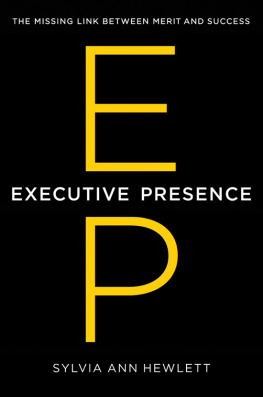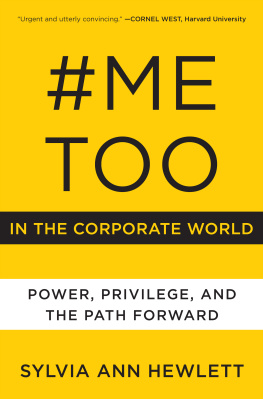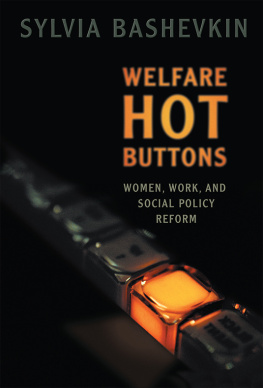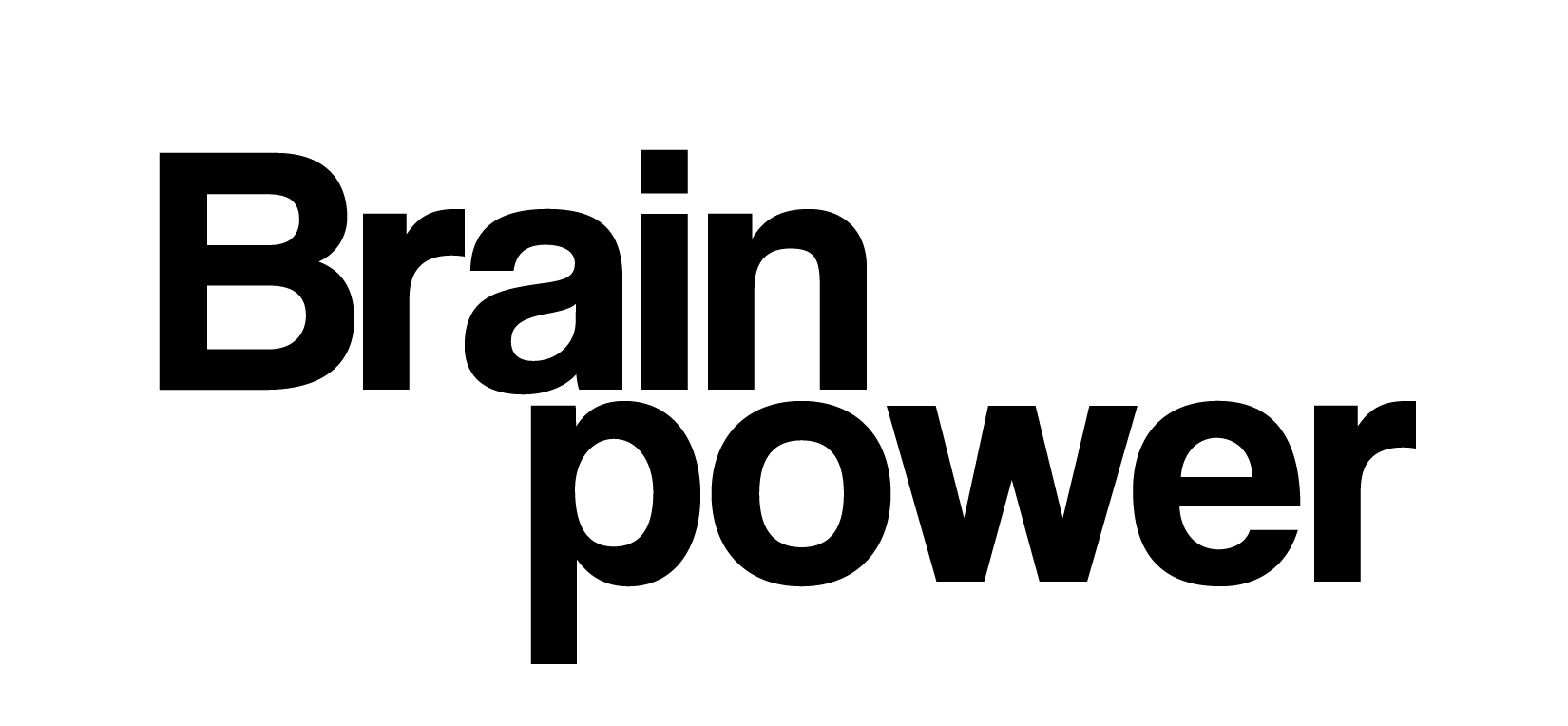
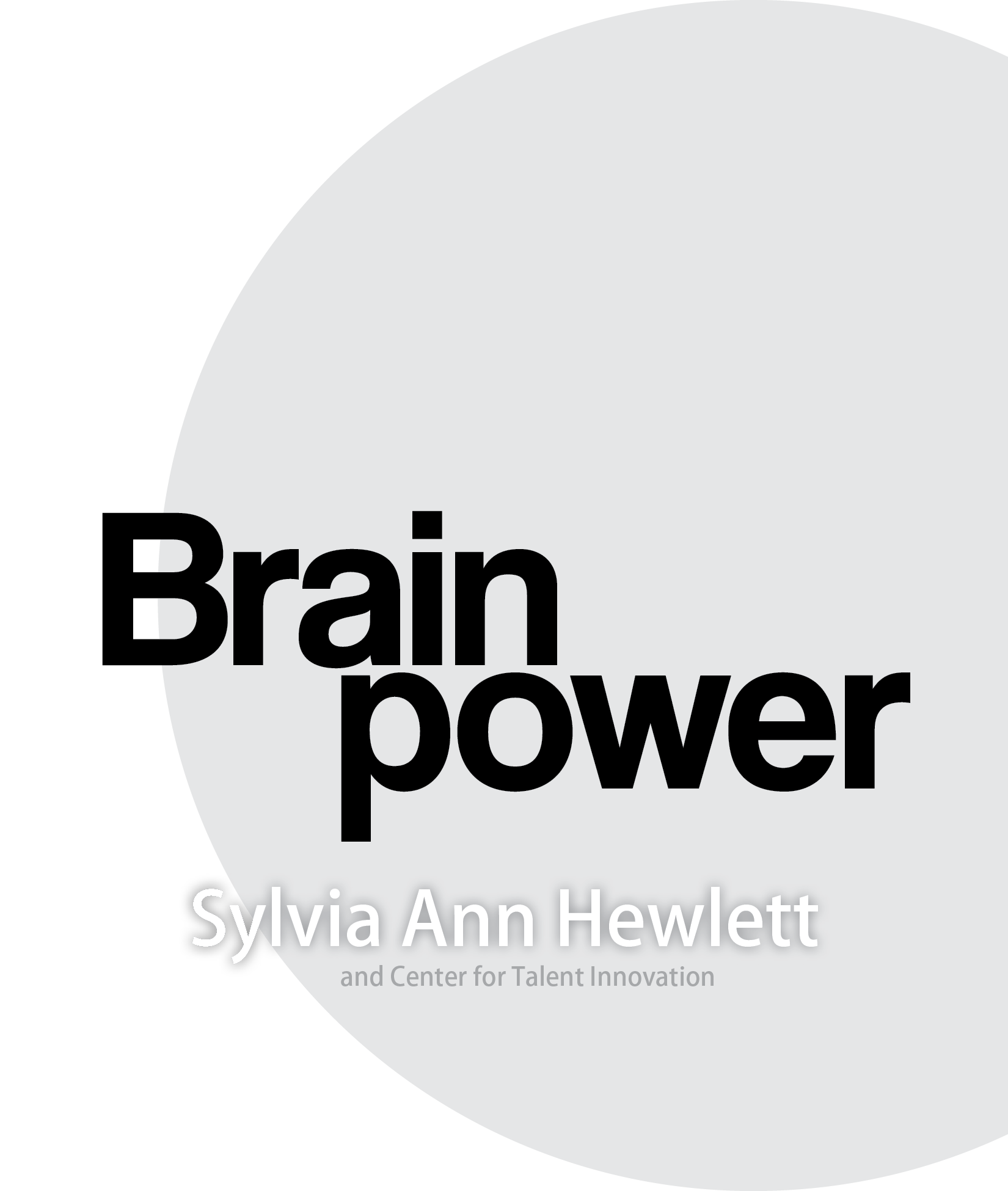
This is a Genuine Vireo Book
A Vireo Book | Rare Bird Books
453 South Spring Street, Suite 531
Los Angeles, CA 90013
rarebirdbooks.com
Copyright 2014 by Sylvia Ann Hewlett
All rights reserved, including the right to reproduce this book or portions thereof in any form whatsoever, including but not limited to print, audio, and electronic. For more information, address: A Vireo Book | Rare Bird Books Subsidiary Rights Department, 453 South Spring Street, Suite 531, Los Angeles, CA 90013.
Set in Orbi
Distributed in the U.S. by Publishers Group West
Portions of this book have been previously published.
Publishers Cataloging-in-Publication data
Hewlett, Sylvia Ann, 1946
Brainpower / Sylvia Ann Hewlett and The Center for Talent Innovation.
p. cm.
ISBN 978-0-9887456-5-0
Includes bibliographical references and index.
1. Diversity in the workplaceUnited States. 2. Work and familyUnited States. 3. WomenEmploymentUnited States. 4. MinoritiesEmploymentUnited States. 5. Homosexuality in the workplaceUnited States. 6. Generation XEmploymentUnited States. 7. EconomicsSociological aspects. 8. Cultural pluralism. I. The Center for Talent Innovation. II. Title.
HF5549.5.M5 H49 2013
658.3 dc23
To the band of heroes who spearheaded the creation of
the Task Force for Talent Innovation:
DeAnne Aguirre
Deborah Elam
Anne Erni
Patricia Fili-Krushel
JoAnn Heffernan Heisen
Rosalind Hudnell
Carolyn Buck Luce
Horacio Rozanski
Cornel West
Billie Williamson
Melinda Wolfe
And to CTIs senior team who have contributed
so much to this body of work:
Lauren Leader-Chiv e
Melinda Marshall
Laura Sherbin
Peggy Shiller
Karen Sumberg
I ntroduction
T he Difference Brainpower Makes
T he book you are holding in your hand or viewing on a screen is a celebration, compelling collection, and cause for optimism.
Its publication, coinciding with the tenth anniversary of the founding of the Center for Talent Innovation, celebrates our growthfrom a small New York-based nonprofit focused on issues of womens retention and acceleration, to a global think tank that is changing how we conceive of and manage high-echelon talent worldwide.
It collects, in one place, four of the many high-impact research projects the Center has conducted over the last decade. These studies embody our vision: that the full realization of brain power across the divides of gender, generation, geography, and culture is at the heart of both human flourishing and competitive success.
And because this book showcases concrete action, it provides grounds for confidence in the future. The flagship project of the Center is the Task Force for Talent Innovation. Back in 2004 this group was composed of seven companies. Today it is composed of eighty companies and organizations and is a force to be reckoned with. Task Force members include leaders from American Express, Bank of America, Bloomberg, Booz Allen Hamilton, Bristol-Myers Squibb, Cisco, Deloitte, Deutsche Bank, EMD Serono, EY, GE, Goldman Sachs, Intel, Johnson & Johnson, NBCUniversal, Time Warner, and the International Monetary Fund, among others, and they have driven transformational change. Members have worked with great energy and commitment to turn the Centers groundbreaking research into action on the ground. Together, weve seeded and developed hundreds of best practices. Weve initiated programs and policies that meet head-on some of the most intractable problems in talent management. For example, how do employers get highly qualified women back on track after they have taken a career break? (our Off-Ramps and On-Ramps work), and how do we finally crack that last glass ceiling for multicultural professionals? (our Vaulting the Color Bar and Sponsor Effect work). Weve expanded our research to probe other mature economies (the U.K., Germany, and Japan) as well as the growth hubs of the emerging world (Brazil, Russia, China, and India). And by seeking to showcase our work in high-profile publications such as the Harvard Business Review , weve ensured that our research and action benefit not only Task Force members, but all organizations that want to get the talent equation right. Perhaps most significantly, our brand new researchInnovation, Diversity and Market Growth, which demonstrates precisely how the full utilization of brain power across the talent pool, unlocks innovation and drives competitive successis creating a new case for action and strengthens our conviction that the next ten years will bring an even greater measure of progress and success.
Our Journey Over the Last Decade
When I founded the Center back in 2004 it was clear that progress had stalled for women and other minorities. Leadership continued to be remarkably homogeneous, comprising a wall of white, straight men. Earlier waves of activism, rooted in the civil rights struggle and the womens movements, had created access and opportunity for women and other previously excluded groups, to education and jobsbut diverse individuals remained clustered in the middle and lower reaches of most companies. This failure to find a seat at decision-making tables was the challenge I sought to address. In late 2003, calling on all the connections and goodwill I had accumulated in my career, I brought together a group of remarkable leaders who shared my frustration about the lack of diversity at the top: ten business leaders from Fortune 500 companies, four nonprofit directors, two distinguished scholars, two journalists, and a vice chair of the Equal Employment Opportunity Commission.
We convened at the venerable Century Club in midtown Manhattan for a lunch that stretched into five hours of impassioned discussion. With critical contributions from Cornel West and EY Senior Executive Carolyn Buck Luce, we agreed that a new wave of activism was required to get a significant number of women and people of color on track to positions of leadership. We also agreed that it was up to the private sector to provide the push as government seemed to be steadily retreating from policies that might further accelerate the progression of these groups. And we knew that no country could continue to waste so much highly qualified laborso much brain powerand expect to prosper over the long term. By the end of the day we had conceived of a task force comprising senior executives from the worlds leading companies and organizations, allied with a newly formed think tank. The idea was that together, these newly formed entities would turn inquiry into programs, policies, and results. Shortly thereafter, in February 2004, we launched the Center for Work-Life Policy (CWLP) and its flagship project the Hidden Brain Drain Task Force, to spearhead the Centers groundbreaking research.
In 2012, the think tank was renamed the Center for Talent Innovation and the original task force became the Task Force for Talent Innovation. Those name changes were inspired by a need to align our brands, but also by a desire to signal the vastly increased scope, span, and impact of the Center and its Task Force. Our initial discussion about women in the U.S. has grown into a global conversation about how to accelerate the progress of all the underleveraged streams of talent in the global workforce: women, yes, but also people of color, LGBTs, and local talent in emerging marketsemployees who have largely been left out of talent conversations and not sufficiently included in progression models.
Next page

